A garden in a tall sack is a simple home project and a good solution for city homes that don’t have much outdoor space. We made one for the first time in a couple of hours, leaned it against the side of a house and planted it with hot peppers, basil and sweet potatoes.
Sack gardens can work in any city, but they can be especially important in developing countries and urban slums. Growing superfoods like kale, spinach and root crops not only cuts grocery bills, but infuses otherwise poor diets with vitamins and other nutrients. Woven plastic feed bags, food aid sacks burlap and other large bags have been converted into upright gardens in cities in Kenya and Uganda, schools in India, communities in Mozambique, South Africa and the Philippines. A good example comes from the UN Food and Agriculture Organization, which published notes from an interesting discussion of a garden program in Kibera (link down), Kenya, by the French non-profit Solidarites International.
We took tips for our how-to guide from Appropedia’s and Gardens for Health’s bag garden pages (link down) and Send a Cow’s video tutorial for making a bag garden in Uganda (link down). This is how we did it.
Materials
- 1 burlap coffee sack. Feed sacks and food aid sacks work, too, as would any large bag.
- 3 cubic feet of soil. We used organic compost, but a soil-manure mixture would work, as would compost from an ecological toilet, a household waste compost bin or any nutrient-rich soil.
- Gravel. *A large yogurt container with the bottom cut out. Coffee cans or other similar-sized containers also work.
- Starter plants. We planted serrano and habanero chiles, sweet potato, sweet pepper and two kinds of basil.
Tools
- Utility knife
- Trowel or shovel (optional)
Build time
We spent about one hour gathering the materials and 1.5 hours putting it together the first time. It could go much faster once you know what you’re doing.
We started with compost, gravel, a burlap coffee sack and a large yogurt container with the bottom cut out.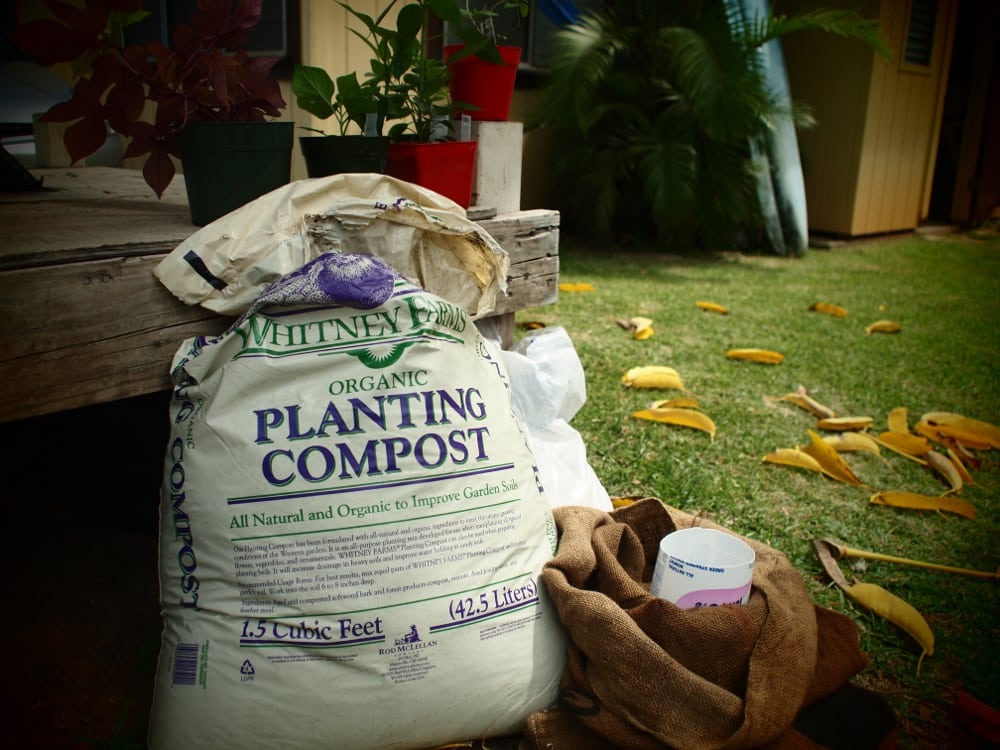
Our starter plants are two kinds of chile pepper, two kinds of basil, sweet potato and sweet pepper.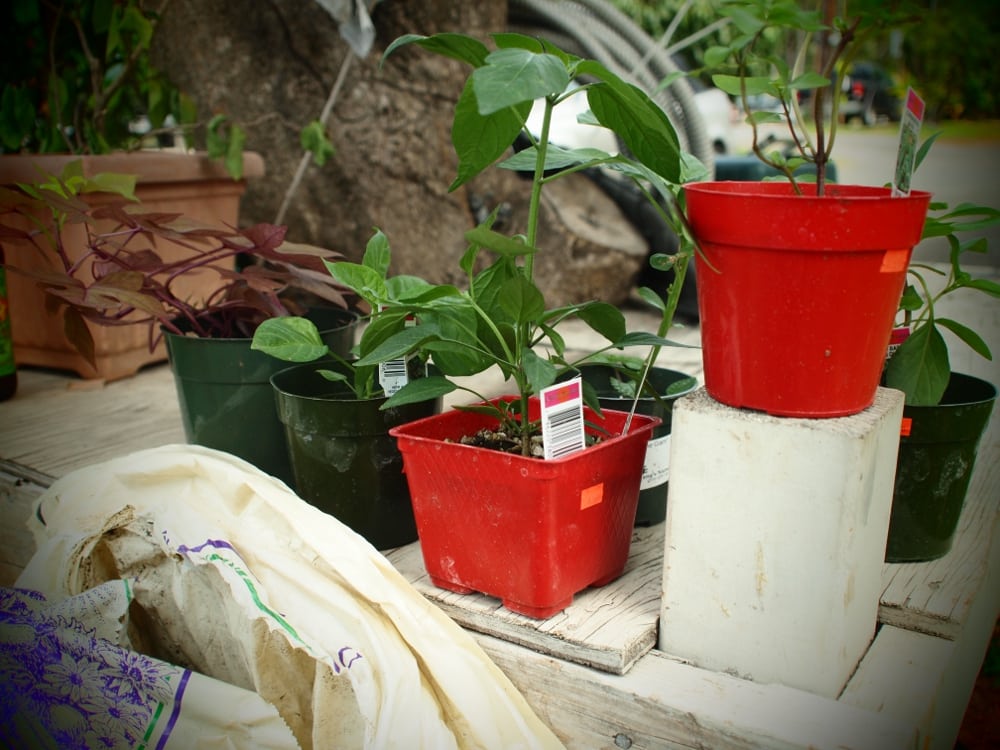
Put a shallow layer of soil in the bottom of the sack, place the yogurt container (or coffee can or a similar container) in the center and fill it with gravel.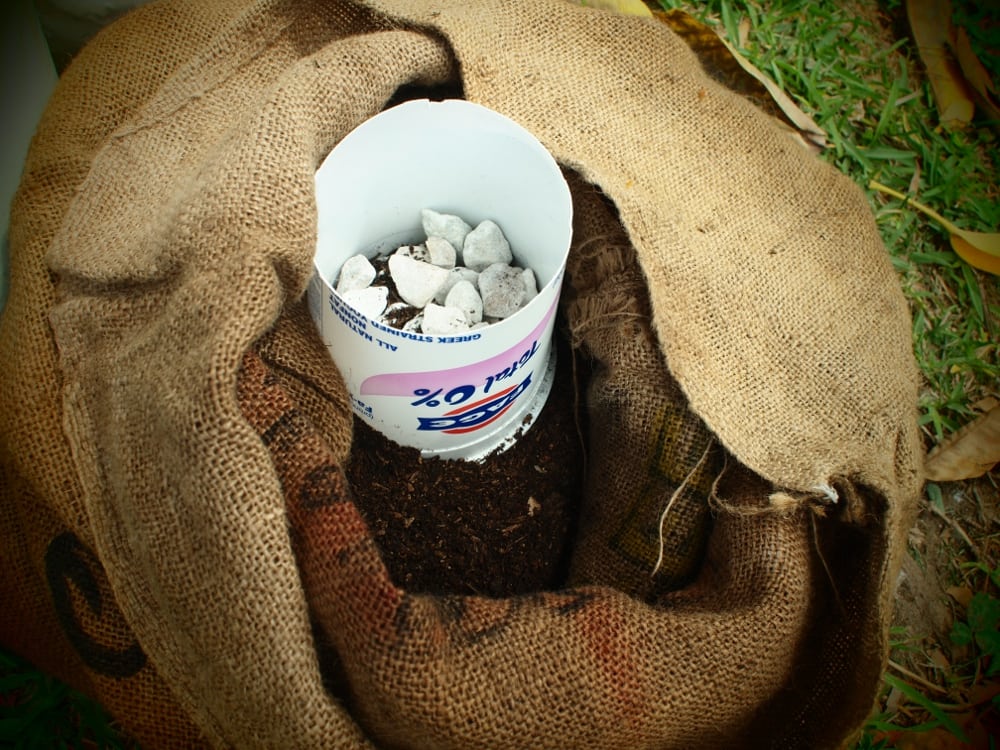
Shovel the soil around the rock-filled container and fill out the sack to the edges. When the soil reaches the top of the container, pull it up gently, leaving the rocks in a column in the center. Repeat until the bag is full with a center column of gravel. The column is for drainage and water distribution throughout the sack.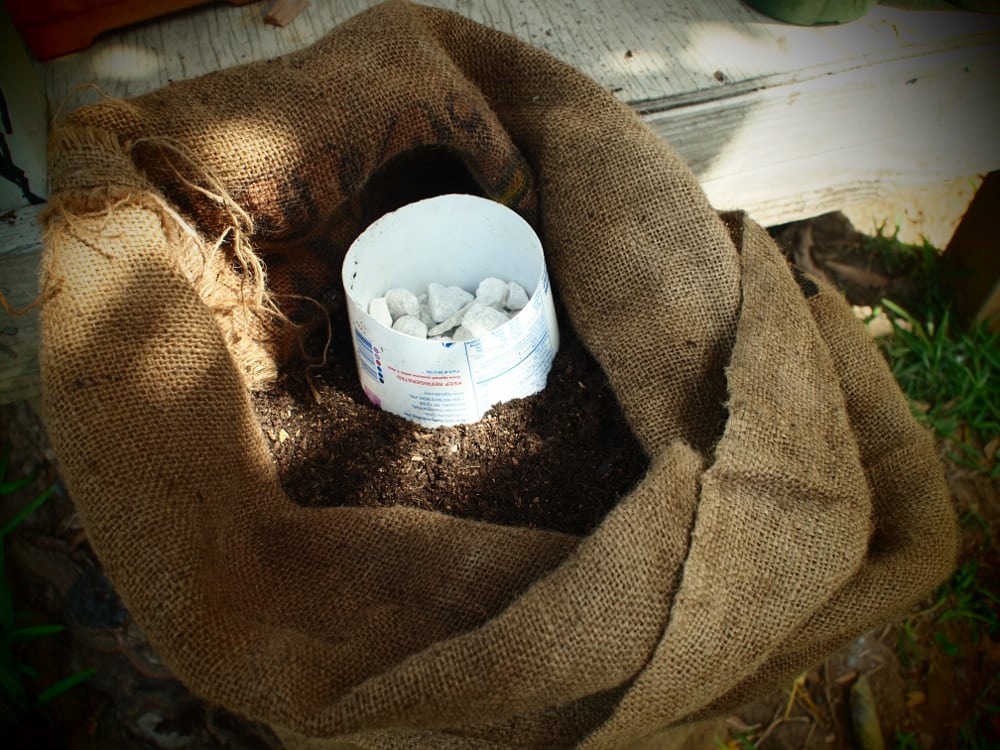
Pro tip: Put root crops on top and leafy vegetables and herbs in the sides.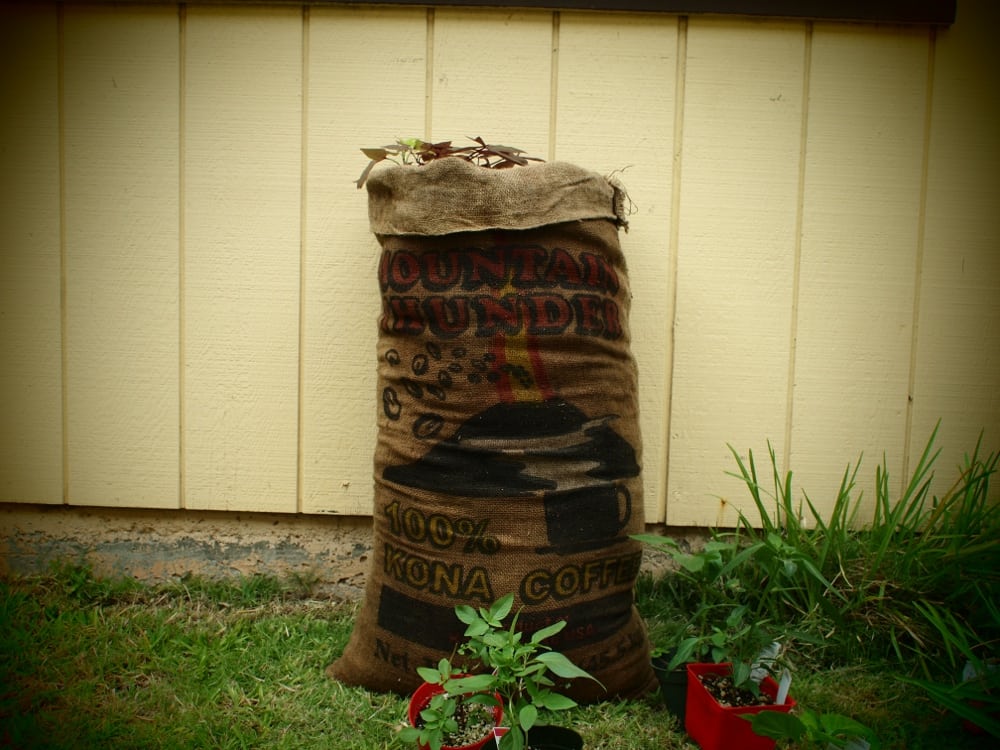
Plant the top of the sack.
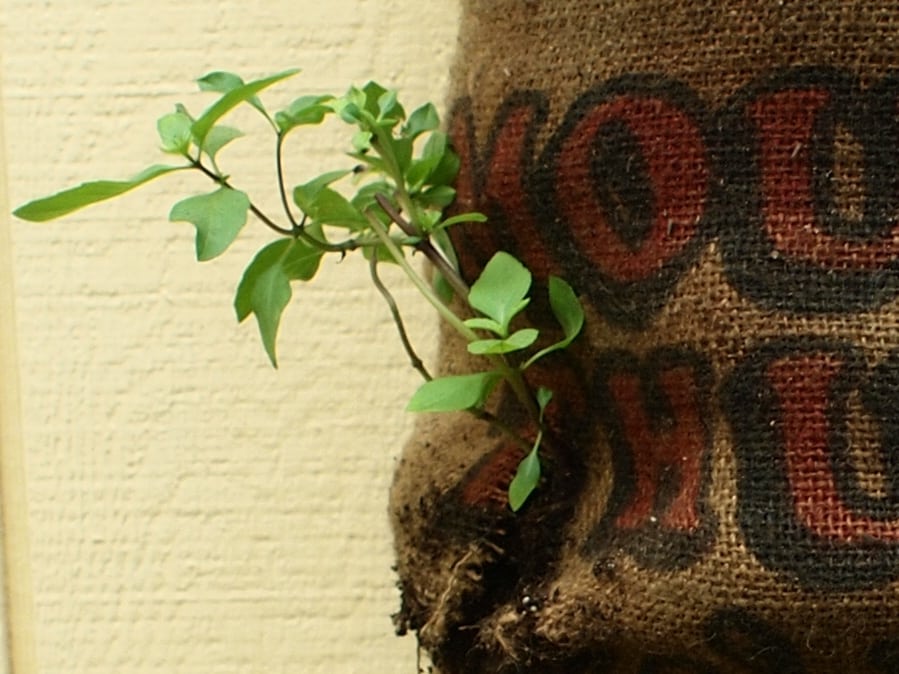
Cut a small hole in the sack for planting along the sides.
Pro tip: We cut the holes too big. Try making a small cut that looks like an upside down “T,” then scoop out soil from below the cut to make a little shelf for the plant.
The finished sack garden. This can hold more plants, but we settled on six.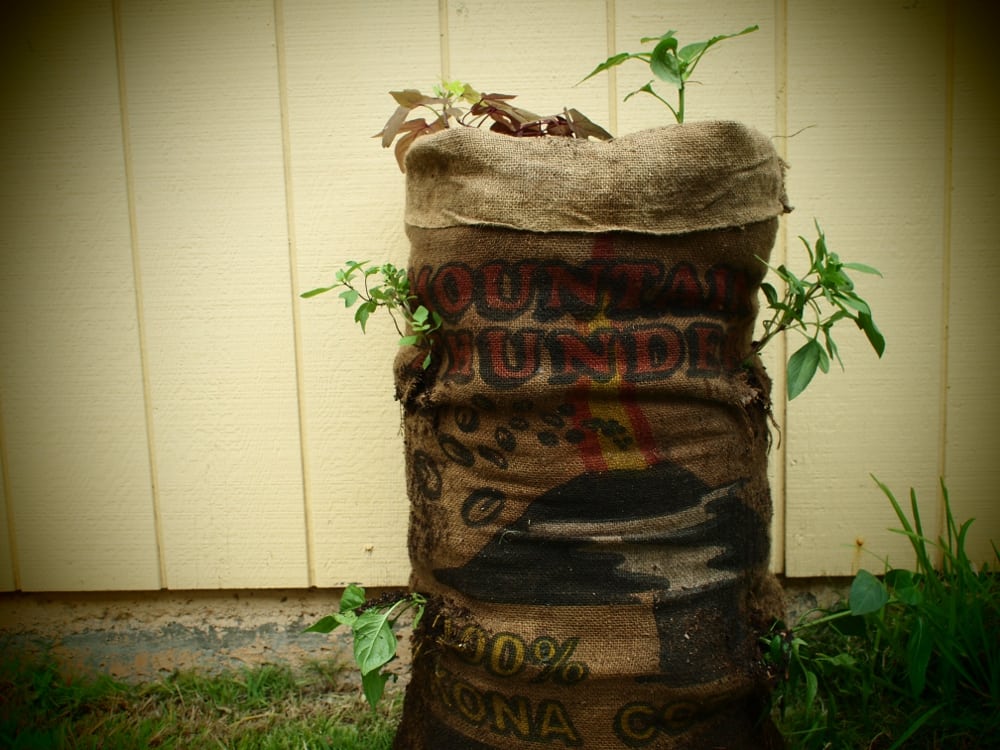
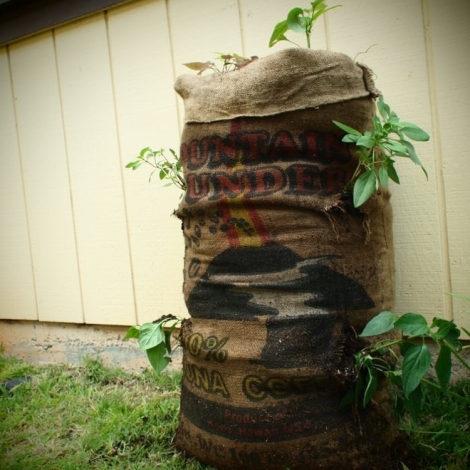
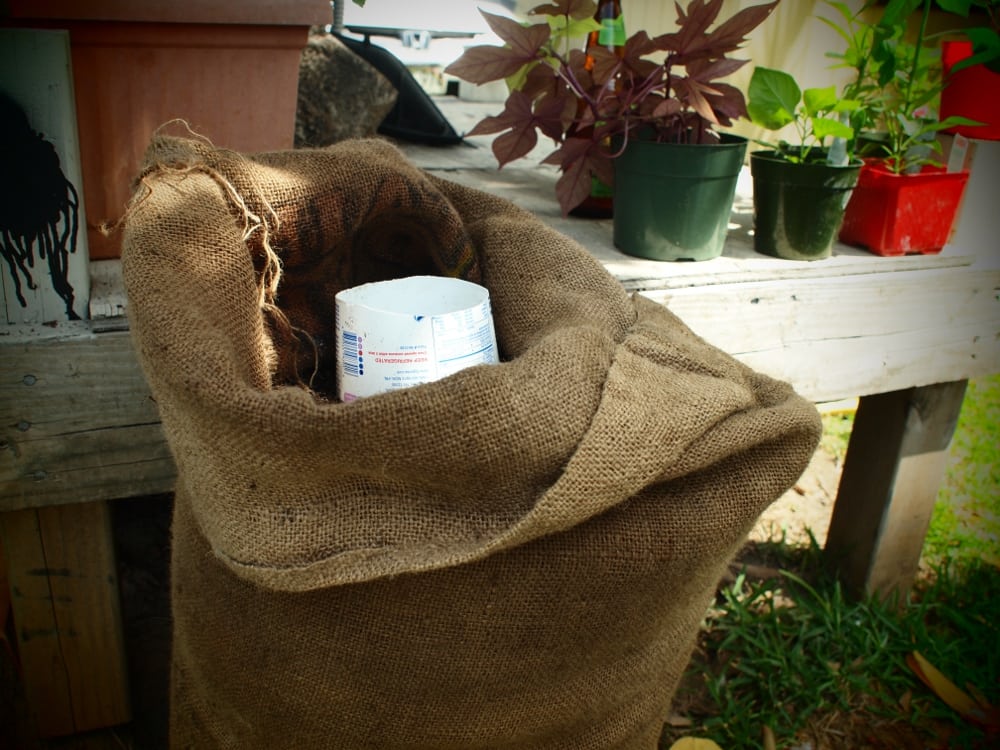
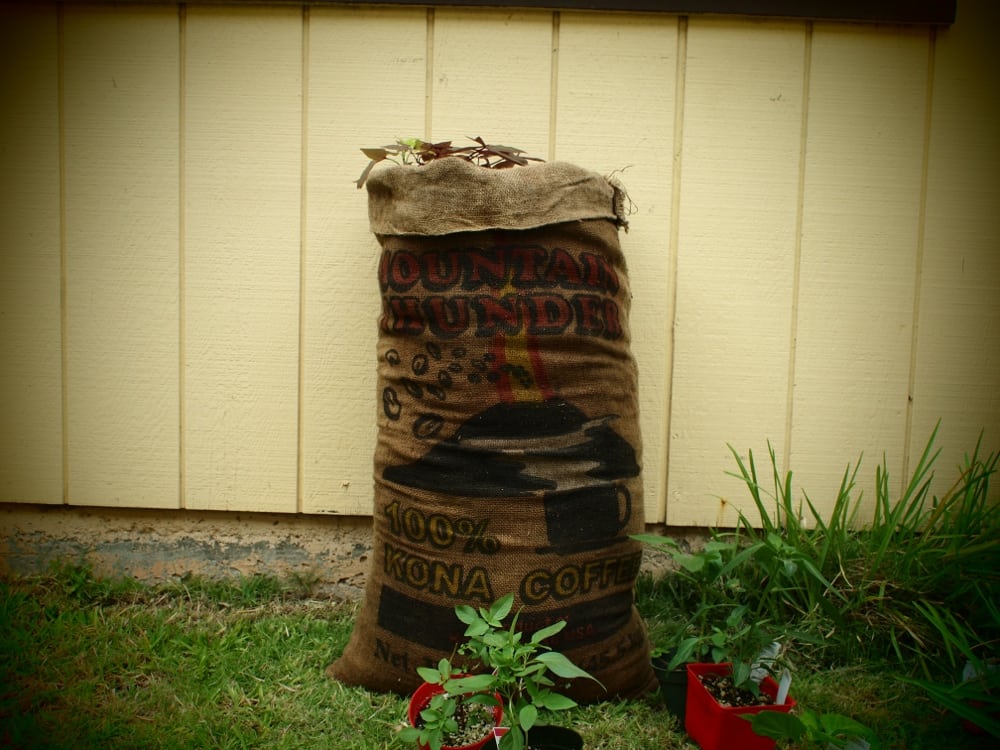
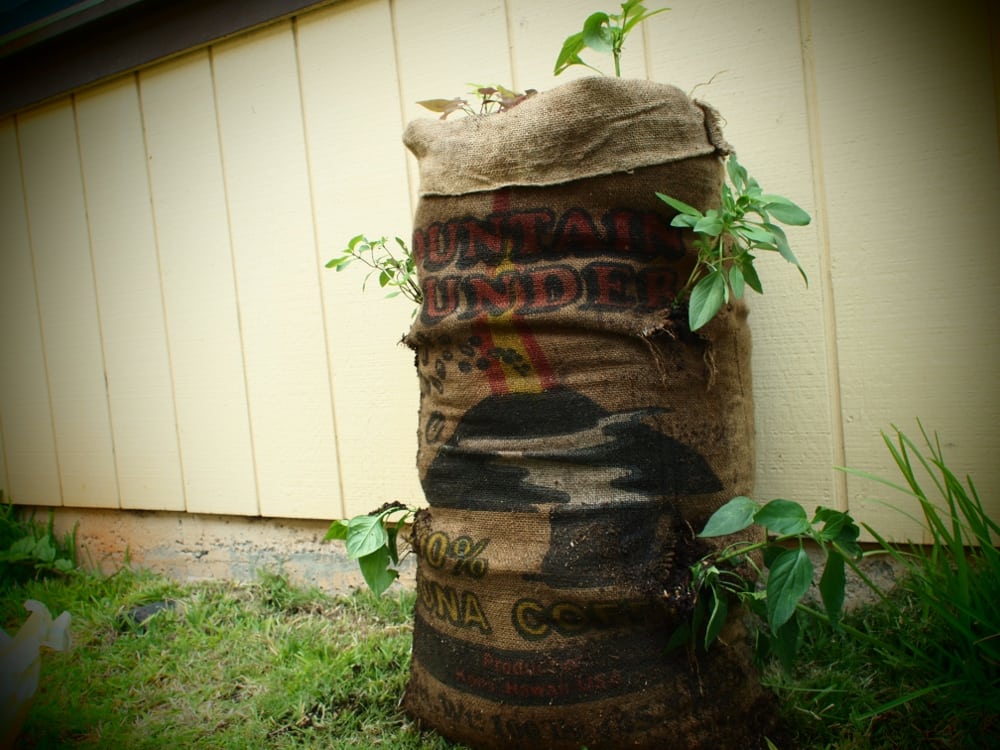
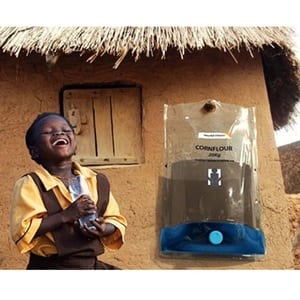
Comments from the Community
2 Comments